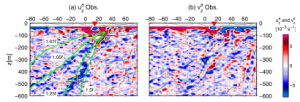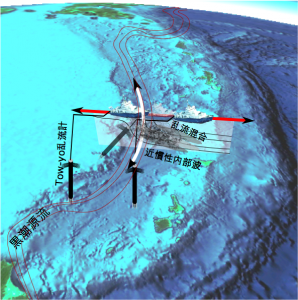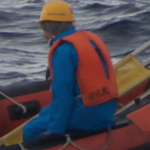Takeyoshi Nagai
Near-inertial waves and diapycnal mixing in the Kuroshio and its origin
Research Summary
Previous studies have suggested that the Kuroshio origin is frequently accompanied by banded near-inertial shear. It is however unclear how these near-inertial waves are generated and affect diapycnal mixing. In this study, mechanisms of these wave generations, their propagations, and dissipations are investigated with high-resolution microstructure measurements and numerical simulations. The objectives of this study is to quantify (1) the energy being transferred from the Kuroshio current in its origin to near-inertial waves, and (2) the rate of the near-inertial wave energy dissipation, and to (3) evaluate the impacts of associated diapycnal mixing on the nutrient supply.

Fig. 1:Schematics of tow-yo microstructure observations in the Kuroshio origin regions proposed by this research.

Fig. 1:Schematics of tow-yo microstructure observations in the Kuroshio origin regions proposed by this research.
Principal Investigator:
Takeyoshi Nagai
Assistant Professor, Tokyo University of Marine Science and Technology, Department of Ocean Sciences, Physical Oceanography
Collaborator:
Ryuichiro Inoue
Senior Scientist, JAMSTEC, Physical Oceanography
Collaborator:
Hirohiko Nakamura
Associate Professor, Faculty of Fisheries, Kagoshima University, Physical Oceanography




